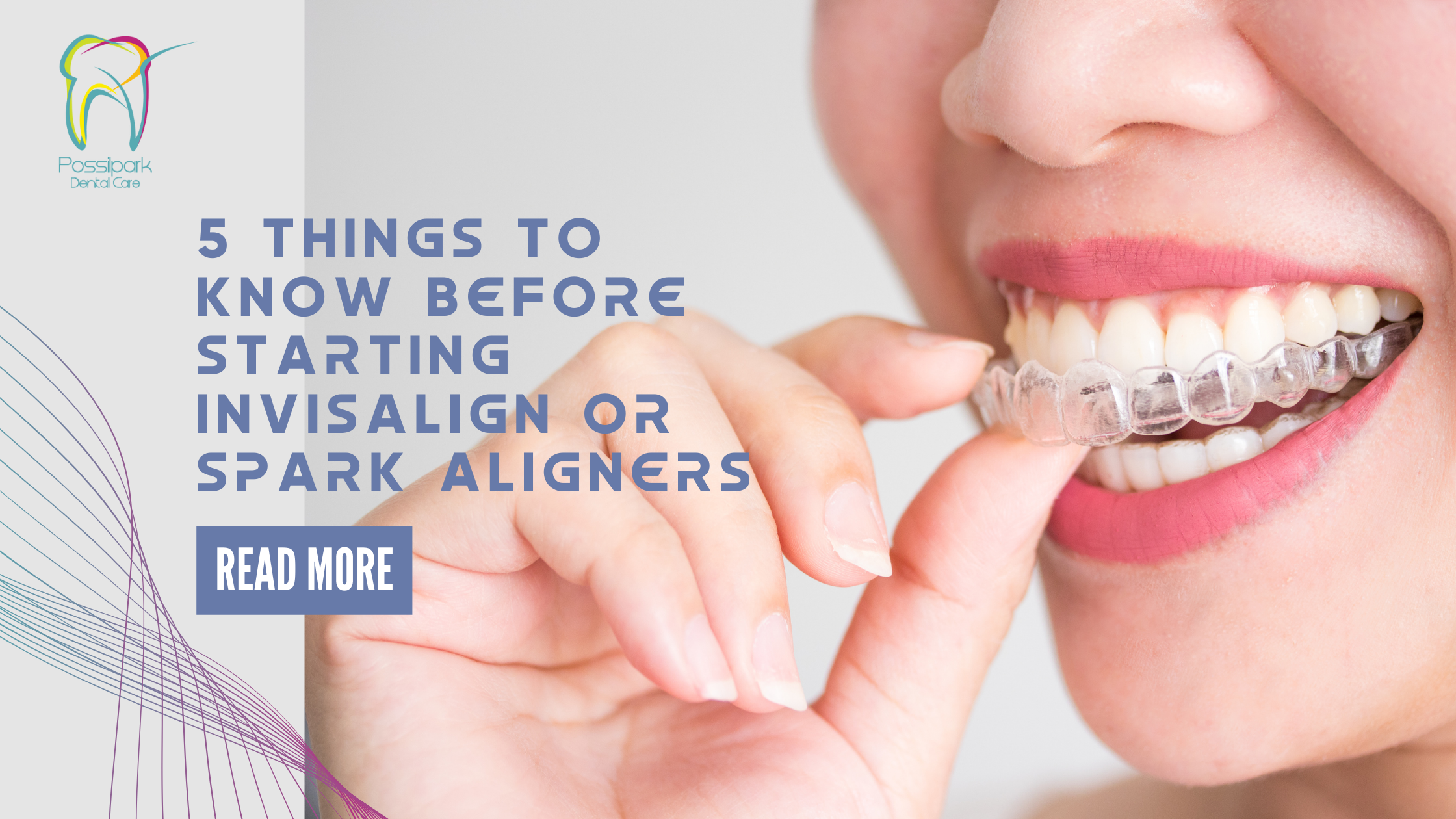
Choosing to straighten your teeth with Invisalign® or Spark Aligners is an exciting step towards a more confident smile. These clear aligners offer a discreet, comfortable and effective way to correct misalignment without the need for traditional metal braces.
Before starting treatment, it’s important to understand what to expect. Here are five key things you should know before beginning your Invisalign® or Spark Aligner journey at Envisage Dentistry Possilpark.
1. Clear Aligners Are Nearly Invisible but Require Commitment
One of the biggest reasons people choose Invisalign® or Spark Aligners is their discreet appearance. Unlike metal braces, these aligners are made from transparent material, making them virtually invisible when worn.
However, for the treatment to work effectively, you must:
✅ Wear your aligners for 20-22 hours per day
✅ Remove them only for eating, drinking (except water), and brushing
✅ Stay consistent with switching to new aligners as instructed by your dentist
Clear aligners give you flexibility, but they also require commitment to see the best results.
2. Treatment Length Varies for Each Patient
The duration of your Invisalign® or Spark Aligner treatment depends on factors such as:
✅ The severity of your misalignment
✅ How well you follow wearing guidelines
✅ Your body’s natural response to tooth movement
On average, most treatments take between 6 to 18 months, though some cases may take longer. During your initial consultation, our team at Envisage Dentistry Possilpark will provide a customised treatment plan tailored to your needs.
3. Aligners Are More Comfortable Than Braces, But You May Experience Some Pressure
Unlike metal braces, clear aligners don’t have brackets or wires, reducing irritation inside the mouth. However, you may feel slight pressure or tightness when switching to a new set of aligners.
✅ This is completely normal and a sign that your teeth are moving as planned
✅ Any discomfort typically lasts a few days after switching aligners
✅ You can manage mild soreness with over-the-counter pain relief if needed
Most patients find Invisalign® and Spark Aligners far more comfortable than traditional braces, making them an ideal choice for teeth straightening.
4. You’ll Need to Maintain Good Oral Hygiene
Because aligners are removable, maintaining oral hygiene is easier compared to braces. However, you’ll need to:
✅ Brush and floss after every meal to prevent bacteria buildup
✅ Clean your aligners daily with a soft toothbrush
✅ Avoid sugary drinks while wearing aligners to reduce the risk of cavities
A clean mouth ensures a healthier smile and prevents issues like staining or bad breath during treatment.
5. Retainers Are Needed to Maintain Results
Once your Invisalign® or Spark Aligner treatment is complete, you’ll need to wear a retainer to prevent your teeth from shifting back.
✅ Retainers help keep your teeth in their new position
✅ You’ll likely need to wear them full-time at first, then just at night
✅ Your dentist will advise on the best retainer type and schedule for you
Following retainer guidelines ensures that you maintain your beautifully straightened smile for years to come.
Start Your Aligner Journey at Envisage Dentistry Possilpark
At Envisage Dentistry Possilpark, we are committed to helping you achieve a straighter, healthier smile with Invisalign® and Spark Aligners. Our expert team will guide you through the process, ensuring a comfortable and effective treatment experience.
✨ Book a consultation today and take the first step towards your new smile!
📧 Email: [email protected]
📞 Call: 0141 800 0630
Frequently Asked Questions
Q: Are Invisalign® and Spark Aligners suitable for everyone?
A: Most patients with mild to moderate alignment issues can benefit from clear aligners. However, severe cases may require alternative treatments. A consultation with our team will determine the best option for you.
Q: Can I eat and drink while wearing aligners?
A: You should remove your aligners before eating or drinking anything except water. This prevents staining and damage to the aligners.
Q: How often do I need to visit the dentist during treatment?
A: Regular check-ups are needed approximately every 6-8 weeks to ensure your treatment is progressing as planned.
